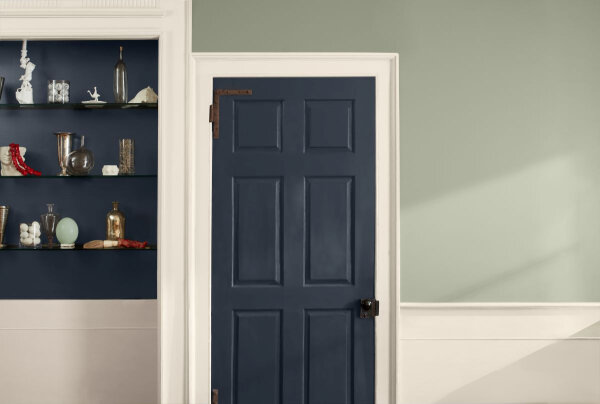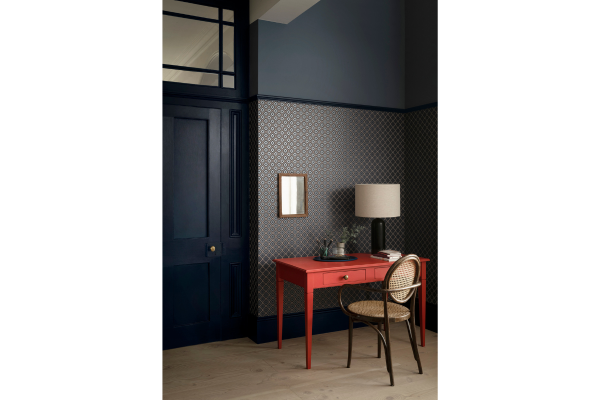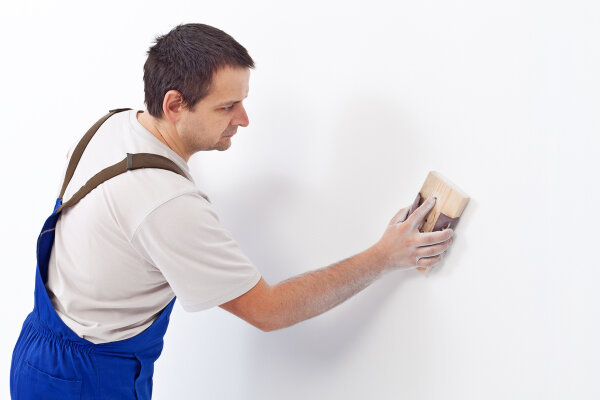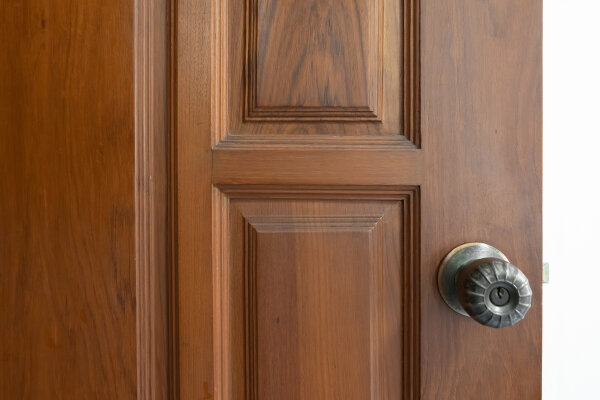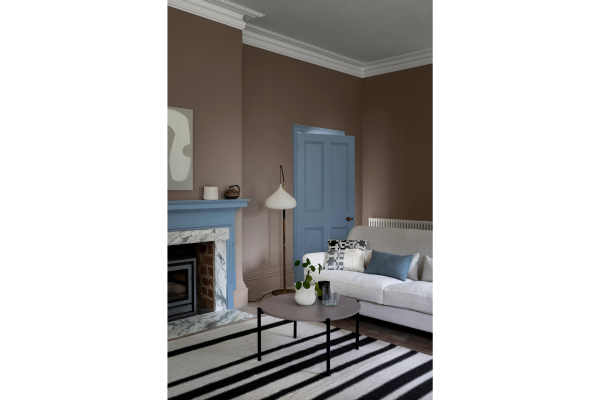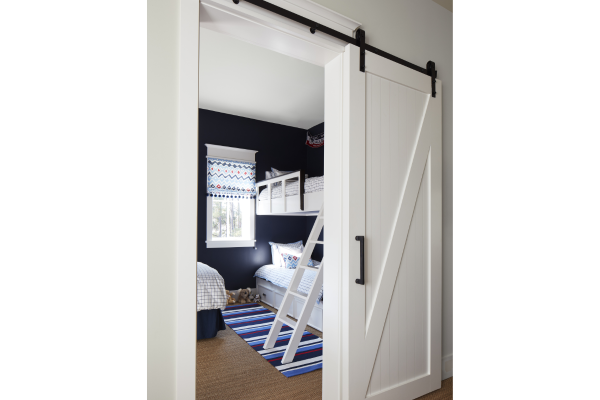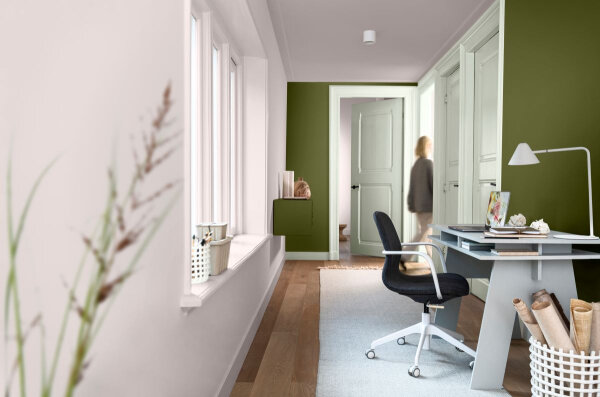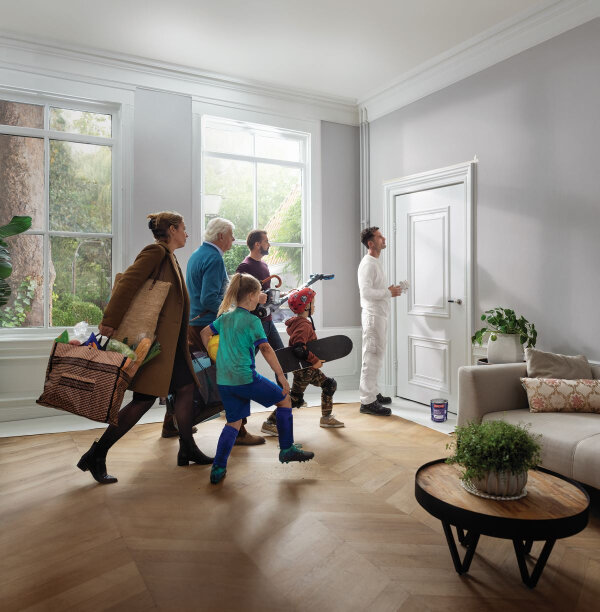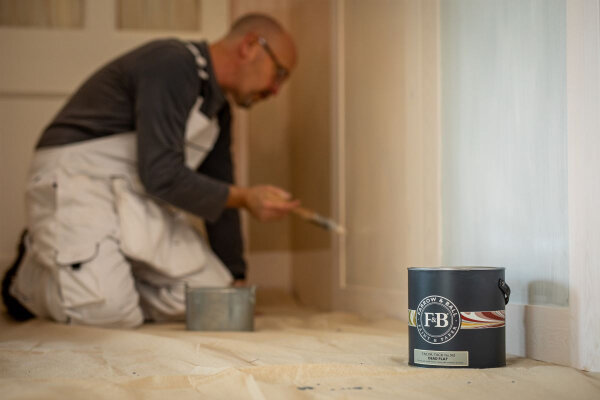How To Paint Internal Doors

December 19th, 2023
If you have had your room decorated,
thinking about updating the colour or finish of the door can really pull the
whole look together, especially if your internal doors haven’t had a lot of
love for a while! Here are some top decorating tips and key finishes that can
be used when painting interior doors.
Photo courtesy of Benjamin Moore.
Tip #1: Do you remove the door from its hinges or leave it in place?
There are pros and cons to both.
Removing the door from its hinges allows you to work quickly and you will avoid
any potential sagging or drips. You will also be able to paint every edge of
the door with ease. You will however have to wait for the door to completely
dry before you’re able to paint the other side. Leaving the door in place will
allow you to paint both sides, but you will be unable to paint every side of the
door.
Photo courtesy of Paint & Paper Library.
Tip #2: Preparation.
Make sure you sand the door down to
provide a key, allowing your paint to adhere to the surface. The door must be
clean and completely dust free before painting. Remove any hardware or cover
with masking tape to avoid any painting mistakes! It is really important you
sand in between coats for the best finish as well.
Tip #3: Painting panelled doors.
If your door has panelling or
moulding, you will need to paint these first. Start with the upper-left hand
panel and work your way down. Make sure you paint the edges first with a brush
before painting the panels. Ensure there is no paint build up in the corners of
each panel. Once you have painted each panel, paint the centre door stiles vertically,
then horizontally.
Tip #4: Painting the sides.
Once you have painted each side of the
door, you can paint around the edges. Ensure there are no sags or runs by
brushing out any excess paint. The best way to avoid sagging is to not overload
your brush or roller during the painting process.
Photo courtesy of Paint & Paper Library.
Recommended finishes:
There are some fantastic products at
Brewers that can be used to paint internal doors, but here are just some of our
favourites! To find your perfect finish, head into your local Brewers or get in
touch with our Product Advisors.
Benjamin Moore Advance:
Advance Satin provides the same
application and performance of a solvent-based paint, but as a water-based
product can be cleaned with soap and water and keeps VOC content low. Advance
Satin has an extended open time allowing for a high-end finish.
Photo courtesy of Benjamin Moore.
Dulux Diamond Satinwood:
Dulux Trade Satinwood is more durable
and long-lasting satin finish compared to standard emulsions, which provides
excellent protection from grease, stains, and scratches. This water-based
product has been designed to be used in high-traffic areas.
Photo courtesy of Dulux.
Johnstone’s Aqua Guard:
Johnstone's Trade Aqua Guard is a
durable water-based satin, suitable for interior use on wood and metal. Surface
protection technology provides defence against wear and tear, scratches and
greasy finger marks. It is a long-lasting finish with advanced application
qualities and great hiding power.
Photo courtesy of Johnstone's.
Farrow & Ball Dead Flat:
All-new Dead Flat is the most matt
finish from Farrow & Ball, creating richer colour from every angle.
Suitable for walls, woodwork and metal, this multi-surface emulsion creates a
colour-drenched transformation with just one finish. Its exceptional coverage
and low splatter make application quick and easy too. Scrubbable and
scuff-resistant, Dead Flat creates beautiful spaces that stay beautiful.
Photo courtesy of Farrow & Ball.


